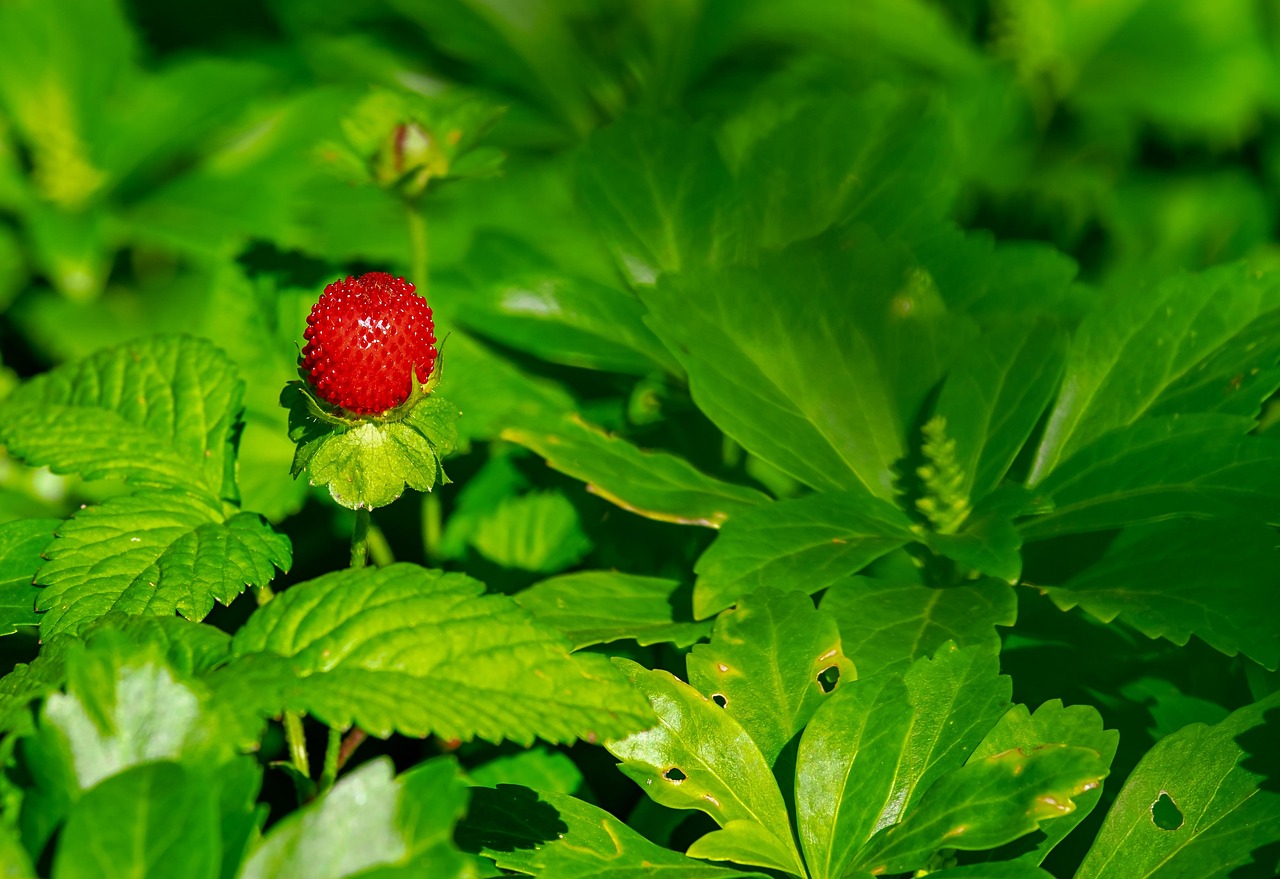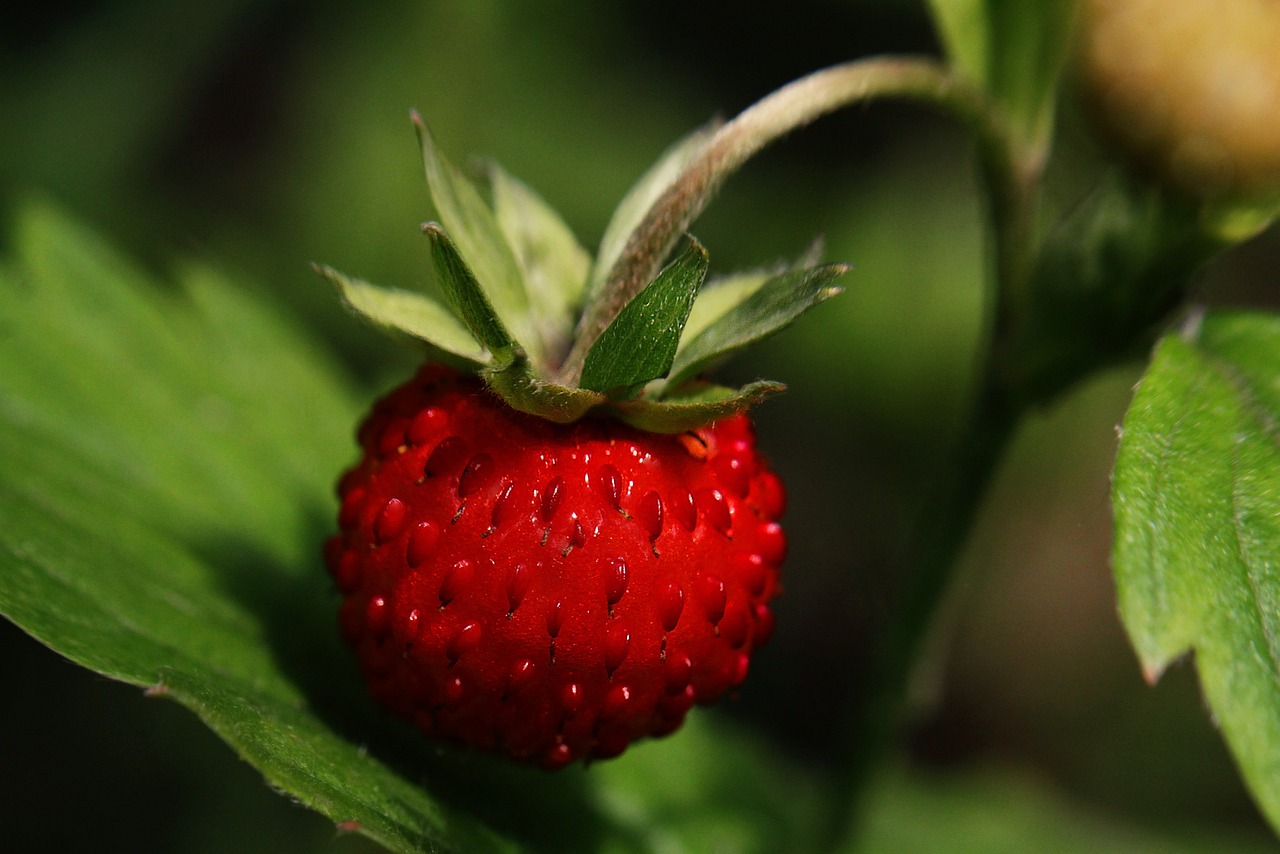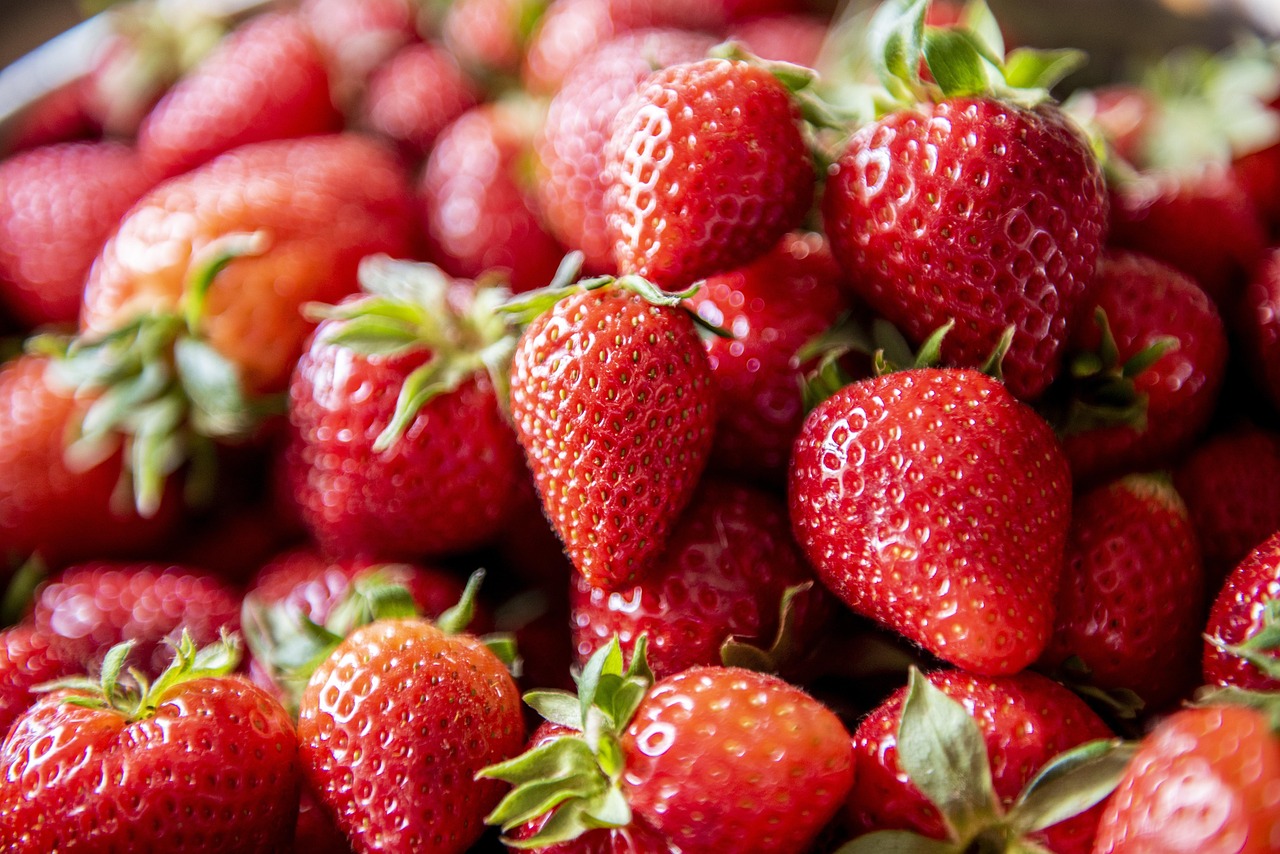Treating strawberry leaf blotch effectively involves a combination of cultural practices, timely fungicidal applications, and maintaining proper plant health. Early detection and intervention are key to managing this common fungal issue in strawberry plants.
Understanding Strawberry Leaf Blotch

Strawberry leaf blotch is a fungal disease caused primarily by the pathogen Mycosphaerella fragariae. This fungus thrives in warm, humid environments, making strawberries particularly vulnerable during certain seasons. The disease manifests as dark spots on the leaves, which can lead to premature leaf drop and reduced fruit quality. Understanding the life cycle of this fungus is crucial for effective management.
The development of this disease typically begins in early spring as temperatures rise and humidity increases. Initially, small, dark spots appear on the older leaves. As the disease progresses, these spots enlarge and can merge, resulting in larger areas of leaf tissue being affected. This not only impacts the aesthetics of the plants but also their overall productivity.
Symptoms of Strawberry Leaf Blotch
Identifying the symptoms of strawberry leaf blotch early can help in managing the disease effectively. Key symptoms include:
- Small, dark green to black spots on older leaves
- Yellowing of leaves surrounding the spots
- Premature leaf drop, especially during flowering and fruiting stages
- Reduced vigor and yield of the plants
Proper diagnosis is essential. Confusing strawberry leaf blotch with other diseases or nutrient deficiencies may lead to ineffective treatments. Regular inspection of plants will help in recognizing these symptoms early.
Conditions Favoring Strawberry Leaf Blotch
Certain environmental conditions promote the growth of the fungus responsible for strawberry leaf blotch. These conditions include:
| Condition | Impact |
|---|---|
| High Humidity | Encourages fungal growth and spore dispersal |
| Warm Temperatures | Optimizes conditions for fungal development |
| Poor Air Circulation | Increases humidity around the plants, facilitating infection |
Understanding these conditions can help gardeners take proactive steps to prevent outbreaks. For instance, proper spacing of plants can improve air circulation and reduce humidity levels around the foliage.
Preventive Measures
Preventing strawberry leaf blotch requires an integrated approach that combines cultural practices and vigilant monitoring. Here are some effective strategies:
- Choose resistant strawberry varieties when possible.
- Ensure adequate spacing between plants for improved airflow.
- Avoid overhead watering to minimize leaf wetness.
- Implement crop rotation to disrupt the life cycle of the pathogen.
- Regularly remove and dispose of infected leaves to prevent spread.
By implementing these preventive measures, gardeners can significantly reduce the risk of strawberry leaf blotch affecting their crops. Preventive actions are essential for maintaining healthy plants and ensuring a bountiful harvest.
Managing Strawberry Leaf Blotch: Treatment Options
When preventive measures are not sufficient, applying effective treatments becomes crucial for managing strawberry leaf blotch. Timely interventions can help mitigate the impact of this disease on plant health and fruit yield. There are several treatment options available, including fungicides, organic solutions, and cultural practices that can be employed to control the spread of the fungus.
Fungicide Applications
Fungicides are among the most common treatments for strawberry leaf blotch. They can be effective when used correctly and at the right time. Here are some key points to consider:
- Timing: Apply fungicides at the first sign of symptoms or as a preventive measure during high-risk periods, such as early spring.
- Product Selection: Choose fungicides specifically labeled for use against Mycosphaerella fragariae. Products containing active ingredients like chlorothalonil or azoxystrobin can be effective.
- Application Method: Ensure thorough coverage of the foliage. This may require using a sprayer that can reach the undersides of leaves where spores may reside.
It is important to follow the manufacturer’s instructions regarding application rates and intervals. Overuse of fungicides can lead to resistance, making the treatments less effective over time.
Organic Treatment Alternatives
For gardeners preferring organic solutions, several options exist that may help manage strawberry leaf blotch:
- Baking Soda: A solution of baking soda mixed with water can create an alkaline environment unfavorable for fungal growth. Mix one tablespoon of baking soda with one gallon of water and apply it to the affected plants.
- Neem Oil: This natural pesticide has antifungal properties. Dilute neem oil according to package instructions and apply it to the foliage, ensuring even coverage.
- Garlic Spray: A homemade garlic spray can deter fungal pathogens. Blend several cloves of garlic with water, strain, and spray on plants.
Organic treatments may require more frequent applications compared to synthetic fungicides. Therefore, consistency is key for effective management.
Cultural Practices to Support Treatment
Cultural practices can enhance the effectiveness of both chemical and organic treatments. These practices focus on creating an environment less conducive to fungal growth:
- Water Management: Water plants in the morning to ensure they dry out by evening. This reduces leaf wetness, which is critical for fungal infection.
- Mulching: Use straw or other organic materials as mulch around plants. This helps retain soil moisture while preventing splashing of soil onto lower leaves, which can introduce pathogens.
- Regular Pruning: Remove any dead or diseased foliage promptly. This helps improve air circulation and reduces the chances of infection spreading.
Implementing these cultural practices not only aids in managing existing problems but also supports overall plant health, making them more resilient against diseases.
Monitoring and Ongoing Care
Continuous monitoring is essential for managing strawberry leaf blotch effectively. Gardeners should regularly inspect their plants for signs of disease and assess the effectiveness of treatments applied. Maintaining detailed records of symptoms observed, treatments used, and weather conditions can provide valuable insights for future management strategies.
Additionally, consider the following tips for ongoing care:
- Rotate Crops: Change the planting location of strawberries each season to disrupt the life cycle of the fungus.
- Soil Health: Test soil regularly to ensure it is balanced and rich in nutrients. Healthy soil leads to healthier plants that are more resistant to disease.
- Pest Management: Keep an eye on pest populations, as certain pests can stress plants and make them more susceptible to diseases like leaf blotch.
A proactive approach that combines treatment options with ongoing care will provide the best results in managing strawberry leaf blotch effectively.

Environmental Considerations for Strawberry Cultivation
Creating optimal environmental conditions plays a significant role in managing strawberry leaf blotch. Understanding the factors that influence plant health can help gardeners minimize the risk of fungal infections. Here are several environmental considerations to keep in mind:
Sunlight Requirements
Strawberries thrive in full sunlight, which not only promotes healthy growth but also helps reduce humidity around the plants. Adequate sunlight can improve air circulation and decrease moisture on leaves, both of which are essential for preventing fungal diseases.
- Ideal Exposure: Aim to provide at least 6 to 8 hours of direct sunlight per day.
- Spacing Plants: Ensure plants are spaced properly to allow sunlight to reach all parts of the foliage.
Soil Drainage
Good soil drainage is crucial for preventing waterlogged conditions that favor fungal growth. Well-drained soil allows excess water to escape, reducing the chances of leaf wetness and root rot.
- Soil Composition: Incorporate organic matter, such as compost, to improve soil structure and drainage.
- Raised Beds: Consider planting strawberries in raised beds to enhance drainage, especially in heavier soils.
Watering Practices
Water management is an essential aspect of strawberry cultivation. Overhead watering can contribute to prolonged leaf wetness, which is detrimental to plant health.
- Drip Irrigation: Utilize drip irrigation systems to deliver water directly to the root zone without wetting the foliage.
- Watering Schedule: Water in the early morning to allow leaves to dry out during the day, minimizing the risk of fungal infections.
Recognizing and Responding to Outbreaks

Even with preventive measures in place, outbreaks of strawberry leaf blotch may still occur. Early recognition and prompt action are vital for managing these situations effectively.
Signs of Severe Infection
Monitoring your plants regularly will help you spot signs of severe infection. Key indicators include:
- Extensive leaf yellowing and wilting
- Increased number of dark spots and merging blotches
- Significant leaf drop leading to bare patches on plants
Steps to Take Upon Detection
If you notice severe symptoms, immediate action is necessary. Consider the following steps:
- Isolate Affected Plants: Remove and dispose of heavily infected plants to prevent the spread of the disease.
- Apply Treatment: Use appropriate fungicides or organic treatments as mentioned in previous sections. Ensure thorough coverage of unaffected areas as well.
- Monitor Neighboring Plants: Keep an eye on surrounding plants for any signs of disease and treat as necessary.
Soil Health Management
Maintaining healthy soil is fundamental for growing resilient strawberry plants. Healthy soil supports beneficial microorganisms that can help suppress pathogens like Mycosphaerella fragariae.
- Nutrient Balance: Conduct soil tests to determine nutrient levels and adjust fertilization accordingly to promote plant health.
- Add Organic Matter: Regularly incorporate organic matter such as compost or well-rotted manure to enhance soil fertility and microbial activity.
A well-balanced soil environment will not only support plant growth but also enhance resistance to diseases, including strawberry leaf blotch. By focusing on these environmental factors and maintaining soil health, gardeners can create a robust growing environment for their strawberry plants.
Integrating Pest Management Strategies

In addition to managing soil health and environmental conditions, integrating pest management strategies is crucial for protecting strawberry plants from diseases like leaf blotch. Pests can weaken plants and make them more susceptible to fungal infections. Understanding the relationship between pests and disease management can enhance overall plant health.
Common Pests Affecting Strawberries
Several pests can adversely impact strawberry plants, leading to increased vulnerability to fungal diseases:
- Spider Mites: These tiny pests can cause leaf damage, promoting stress and susceptibility to diseases.
- Aphids: Aphids feed on plant sap and can transmit viruses while also weakening plants.
- Strawberry Root Weevil: This pest affects roots, leading to poor plant growth and reduced resilience against diseases.
Pest Control Measures
Effective pest management involves a combination of cultural practices, biological controls, and chemical methods. Here are some strategies to consider:
- Cultural Practices: Keep the garden clean by removing debris and weeds that can harbor pests. Regularly inspect plants for signs of infestation.
- Beneficial Insects: Introduce or encourage natural predators, such as ladybugs and lacewings, that feed on harmful pests.
- Insecticidal Soaps: Use insecticidal soaps or horticultural oils as a less toxic option for controlling pests without harming beneficial insects.
By implementing these pest management strategies, gardeners can help maintain healthy strawberry plants that are less likely to succumb to leaf blotch and other diseases.
Utilizing Technology for Monitoring and Management
Advancements in technology have provided gardeners with new tools for monitoring plant health and managing diseases. Utilizing these technologies can enhance the effectiveness of your gardening practices.
Smart Gardening Tools
Consider incorporating the following technologies into your gardening routine:
- Soil Moisture Sensors: These sensors can help you monitor soil moisture levels, ensuring optimal watering practices that reduce the risk of fungal diseases.
- Drones and Imaging Technology: Drones equipped with imaging technology can help identify plant stress and disease outbreaks from above, enabling timely interventions.
- Mobile Apps: Various gardening apps allow you to track plant health, schedule treatments, and share observations with other gardeners, facilitating collective disease management efforts.
Embracing technology can lead to more informed decisions and proactive management practices for strawberry cultivation.
Final Thoughts
Treating strawberry leaf blotch requires a comprehensive approach that combines preventive measures, effective treatment options, and ongoing care. By understanding the environmental factors that influence plant health, maintaining soil quality, integrating pest management strategies, and utilizing modern technology, gardeners can create an environment conducive to healthy strawberry growth.
The key to success lies in early detection and intervention. Regular monitoring of plant health enables prompt action when symptoms arise. With diligence and the right practices in place, gardeners can enjoy thriving strawberry plants and bountiful harvests while effectively managing fungal diseases like leaf blotch.
Ultimately, cultivating strawberries with care not only enhances your garden but also provides delicious fruits for enjoyment. By implementing these strategies, you can sustain healthy plants that yield flavorful strawberries year after year.
